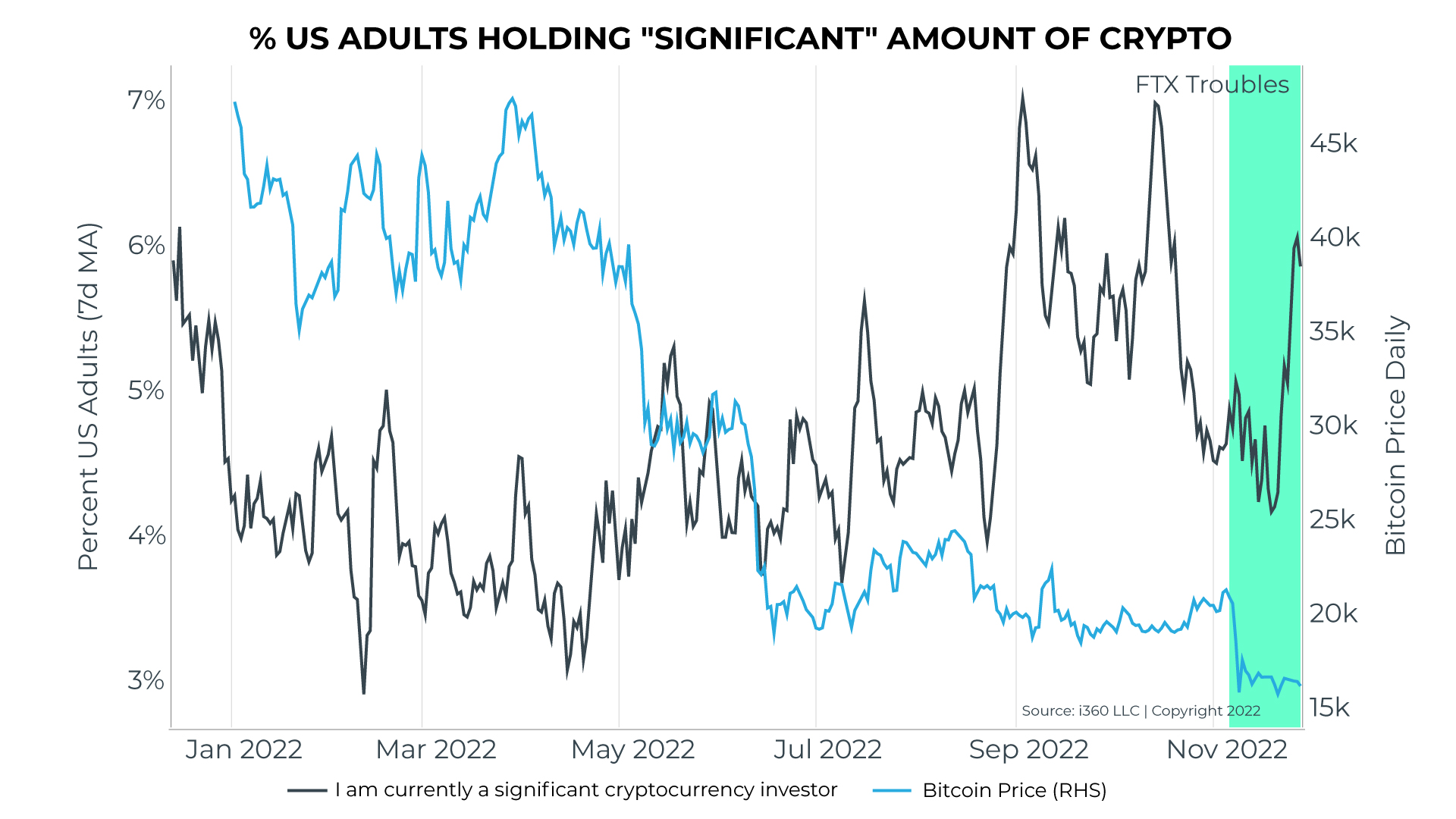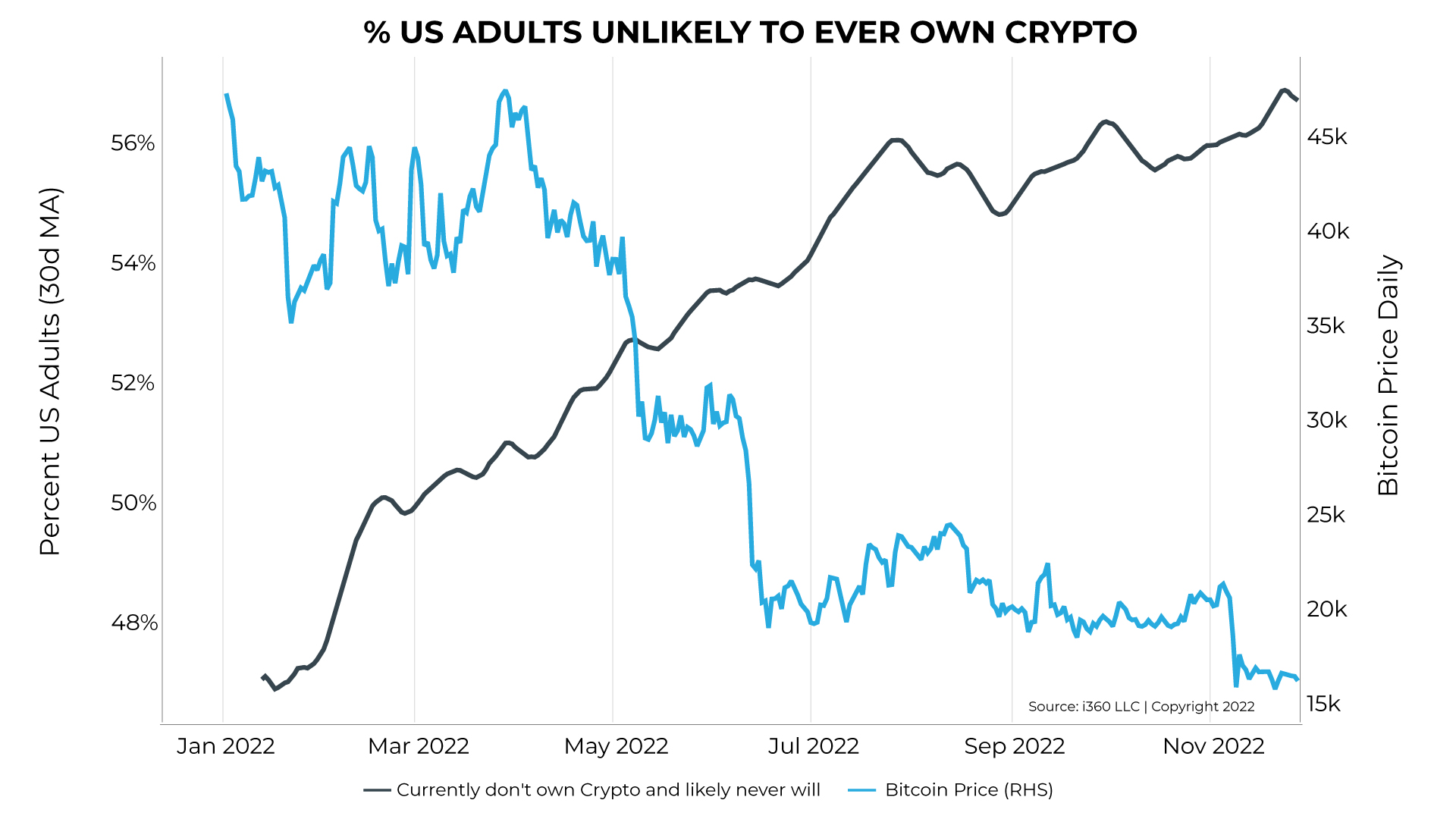
About i360’s Consumer Pulse: The Consumer Pulse asks 1,000, of the 2.5 million US adult panelists, over 150 questions daily. Questions center around key topics such as economy, lifestyle, real estate, automotive, shopping, employment, political opinions, and more.
How did the FTX Bankruptcy affect the propensity to own Crypto?
The November 17th filing of the FTX bankruptcy had our analysts closely watching sentiment toward crypto in our Consumer Pulse survey. Over a million creditors were identified in the FTX Bankruptcy filing, of which many were retail investors. FTX had a duty to protect their customer’s funds, like a trustee, but instead lent the funds out to its affiliated hedge fund, Alameda Research, which subsequently seems to have lost the money.
The end for FTX was set in motion when Binance CEO Changpeng “CZ” Zhao tweeted that Binance would liquidate all their FTT tokens. The FTT token was issued by FTX and used as collateral for loans and currency to acquire other companies. Essentially, FTX printed Monopoly® money and convinced people it was as good as real money. When Binance decided it would like to convert that Monopoly money (FTT) to a fiat currency (US Dollars), FTX went directly to bankruptcy. The FTX bankruptcy set off a chain of events that also bankrupted another crypto lender, BlockFi, on November 28th.
Our hypothesis was that crypto ownership, as measured by Consumer Pulse, would erode in the wake of these events. However, crypto owners seem to have “bought the dip” as bitcoin and other cryptocurrency prices declined.
Which of the following best describes your investment level in cryptocurrency?

The green box in the chart above denotes the period leading up to the FTX bankruptcy filing on November 17th, ending on November 28th, the day BlockFi declared bankruptcy. Initially, there were some negative changes in significant holders, but as prices stabilized at much lower levels, investors increased their holdings. Consumer Pulse signals that many crypto investors changed their allocation from owning none or a small amount, to owning a “significant” amount.
This is not the first time the percentage of significant holders went up, only to have the price collapse further, as witnessed in May, September, and October. None of these increases in crypto allocation worked out well for buyers, as the price continued to collapse.
Consumer Pulse does see the number of people who never owned cryptocurrencies and say they never will continue to rise.

Crypto trading is often compared to gambling in a casino. This year, however, both the house and the patrons seem to be losing.
Disclosure: The information in these blog posts, based on i360’s Consumer Pulse, is for informational purposes only and should not be construed as investment advice on any matter.

